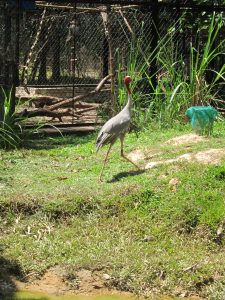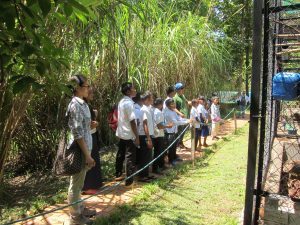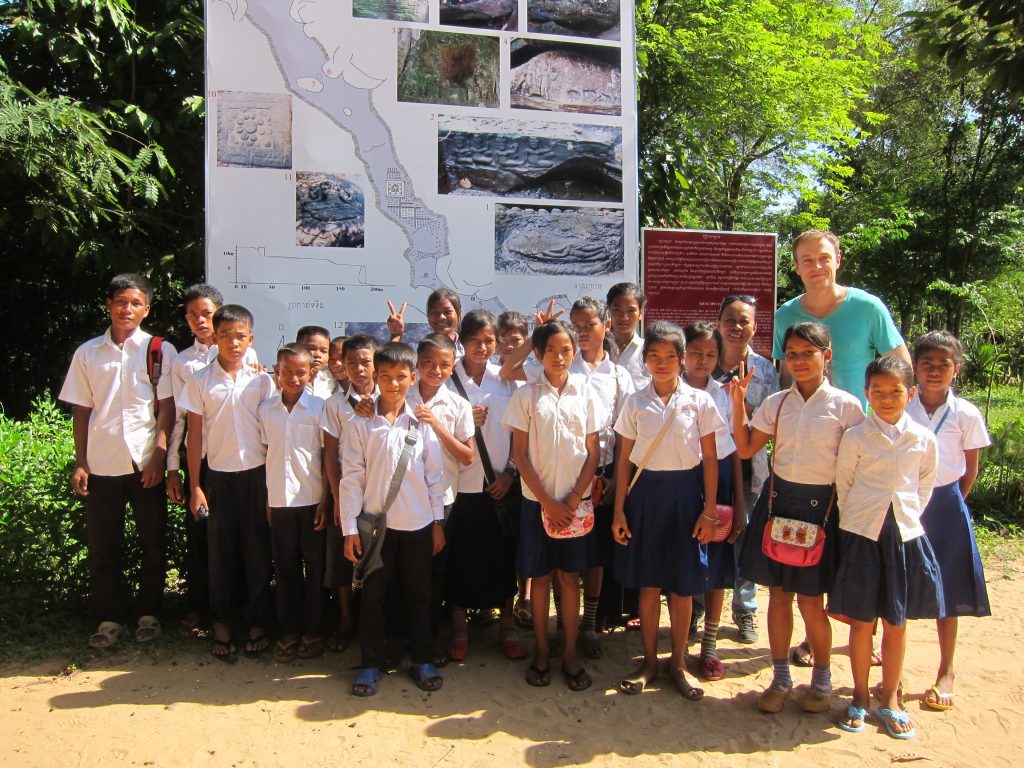By Jolly Zhou
Today I took my first field trip in more than 10 years, along with Grade 6 students from Koh Ker School. We visited the Angkor Centre for Conservation of Biodiversity (ACCB), the first nature conservation centre in Cambodia, located near Kbal Spean.
I loved that like me as a child, these students would have an opportunity to take a trip and learn about their wider environment outside of the classroom. But more importantly, this would be a chance for students to understand the importance of protecting Cambodia’s diverse flora and fauna.
Right now, the wildlife around where they live is threatened by poaching, killing endangered animals and deforestation, which can destroy entire habitats and species. All of these activities are happening at a dangerous pace in Koh Ker and other countryside regions in Cambodia, where animals are often hunted for food, for sale or to make into pets.
Illegal, unsustainable logging is also a prevalent problem that is marring the country’s otherwise lush landscapes and destroying complete habitats.
Sometimes, animals like the pangolin are also caught and sold off for their scales or other body parts which people claim to have medicinal value. Highly endangered animals are occasionally even mistreated out of jest, like a Giant Ibis we saw at the Centre, who had been hit and injured by slingshots before being rescued.
After arriving at the ACCB, the students enjoyed an interactive presentation on the importance of biodiversity and current threats to wildlife. Then we all set off for a tour of the grounds. We saw a few animals that were roaming freely around the Centre but mostly those that were enclosed in shelters and large cages.
I think we were all a bit confused to see caged animals right after hearing about how animals should live freely in the wild. Our guides explained that this is because the caged animals were either once domesticated and now cannot live on their own in the wild and/or are being bred so that their offspring can be set free in the wild before becoming too used to human contact and being fed. 
Some animals are also caged for their own protection, either in quarantine or because they have high economic value and may be stolen otherwise.
One of the guides said that the Centre is looking to build a big aviary, where birds can fly more freely around and also interact in the same habitat with other birds — just like in the wild — but this is in the future.
After seeing the various birds, reptiles and mammals, the students had lunch at a nearby restaurant before proceeding to explore the temples of Banteay Srey. I think they went home pretty tired!
I hope the messages about why we need to protect biodiversity hit home. Based on how closely the students were listening to their biology and conservation guides, it looks like they did. But I think in the future, their communities will also need to learn about alternatives to hunting wild animals for food and the economic downsides of logging illegally in order for these activities to be curbed without stricter law enforcement.
Our hope is that with educational activities like this, students can start taking the first steps toward being the future protectors of Cambodia’s wildlife and environment.
— Jolly Zhou
P.S. By the way, this is an adjutant.
This field trip was co-sponsored by PLF supporters Susan Boyd, Jan Hochbrueckner and Jolly Zhou.



Recent Comments